Aspects of safety
Safety analysis presented in this chapter are related to the secondary pad and vehicle B1
(Cetos) operated on the interoperable supply device (charging pad) with
respect to operation in public area.This secondary pad is especially
designed to minimize the flux density within the air gap by using a
relatively large size and a double flat winding. Therefore, the
following results are only valid for this specific type of secondary
pad.The presented properties of the wireless power transfer using large size secondary pads proof that inherently safe operation is possible without inacceptable health risks. To reach safety it is a general prinziple to build technical systems inherently safe whenever possible. The safest technical equipment is equipment not causing any risk. Furthermore, inherently safe systems provide higher robustness and availability compared to systems implementing active safety mechanisms. Small size secondary pads lead to different properties and might not be inherently safe. Therefore, manufacturers of small secondary pads might be in the need of applying sensors for metallic and living objects in order to shut down or at least reduce power transfer in the presence of foreign objects within the air gap.
The hazard and risk analysis executed for this technical system is extremely comprehensive and cannot be described within this publication. Instead only such potential risc scenarios are presented which are especially caused by the magnetic field within the air gap inbeween the pads and the surrounding space.
Heating of metallic objects
The
technology of wireless power transfer is quite similar to inductive
cooking. But different to cooking where all electrical energiy is used
for heating purpose the primary electrical energy is collected by the
secondary pad and again usable as electrical energy. Despite electrical
losses the wireless energy transfer does not produce heat. As the
losses are quite low and can be lead away over a large area the
charging pads remain cool. This becomes different for small size
secondary pads as they cause higher losses and reduce the cooling
surface.Nevertheless, heating of metallic objects within the air gap can be expected. As such a heated metallic object might be grabbed by a human beeing a potential risk of injury might be given.
By implementing the following three constructive features at the interoperable suppy device the heating of metallic objects is reduced to a minimum.
- The electrical power of an inductive cooking spot is quite comparable to the power of wireless charging from a single phase grid supply. But different to the cooking spot the area used for energy transfer is roughly ten times higher. Therefore, a metallic object of the size of a cooking pan does only receive a tenth of energy thus leading to very low heating. (This is just a rough qualitative comparison and assumes the wireless charging pad is constrcted like a inductive cooking plate, which it isn't as described in the further contruction details. Therefore, even much less heating of metallic objects is given.)
- Alternating magnetic fields are showing the effect of not penetrating metallic objects completely. The heating impact only occurs at the surface of the object. Less penetration leads to less heating power and less temperature rise. The penetration is dependent of the material and the frequency. For that reason not all pans are suitable for inductive cooking. By choosing an operation frequence for the interoperability definition that is about three times higher compared to inductive cooking the penetration and thus the foreign metallic object heating is further reduced.
- The
flux density emerging from the primary pad within a metallic object on
top of it is dependent of its material. Ferromagnetic material like
iron tends to increase the flux density. But also the surrounding
material, especially the material of the primary pad influences the
resulting flux density. By placing the magnetic conducting material and
the conductores of the primary pad away from the surface foreign
metallic objects cannot close the magnetic conductive path. As a result
the flux density within the metallic object is considerabley reduced
and thus the heating energy.
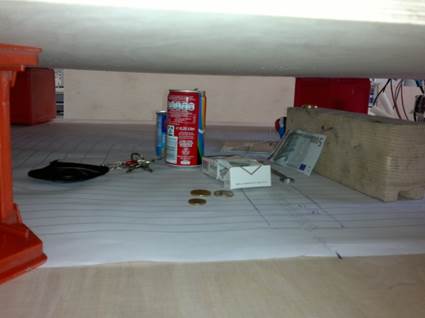
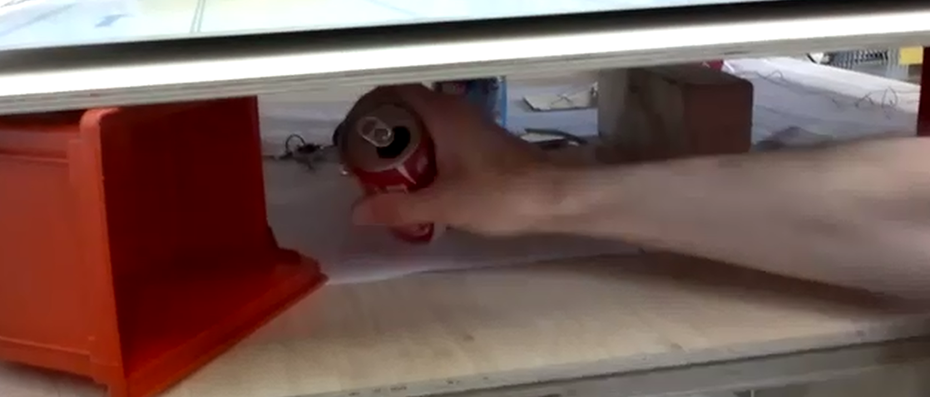
Risk of inflaming foreign objects
A special case of foreign metallic object heating is metallic
plated paper for example often used for packaging of beverages. Due to
the extremely thin metallic layer the magnetic field leads to quite
high temperatures.
Nevertheless, there is no risk of burn by touching such material as the
heat capacity of the material is very low compared to human skin. Thus,
the material is very quickly cooled just by touching it.More critical is the risk of self inflaming of the paper used as carryer material for the thin metallic layer. The described constructive properties of the primary pad need to be suffichent not to inflame such material.
This question has been intensively investigated during the definition of the WiPT-standard. With the choice of the winding design used for the reference device it could be shown that the examined objects sometimes tended to carbonize but did not cause an open flame.
Influence to the human body
Magnetic fields may have influence to the human body. In
case of the wireless power transfer no electromagnetic waves are
generated as e.g. known from radio transmission due to the small
geometric size in comparison to the wave lenght. Therefore,
interactions may only be caused by the locally existing magnetic
fields. Investigations of the harmlessness have been collected by
the "International Commission on Non-Ionizing Radiation Protection
(ICNIRP)" and are published as a guideline. At the relevant frequency
range two influencing effects to the human body are known.- In the low frequency range below about 100 kHz the effect of nerve stimulation is dominating.
- In the higher frequency range above about 1 MHz the effect of heat introduction to the tissue is relevant.
To execute a body phantom simulation a meaningful exposure szenario has to be defined. In case of the wireless power transfer it has been assumed, a human being lies beside the vehicle on the ground grabbing something ot of the center of the vehicle, thus positioning the hand and arm into the active area between the pads. The following figure displays such a situation together with a simulation result. The colors of the figure represent the calculated in situ electrical field normalized to the maximum value.
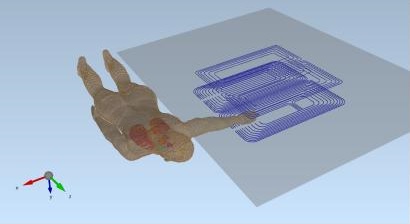
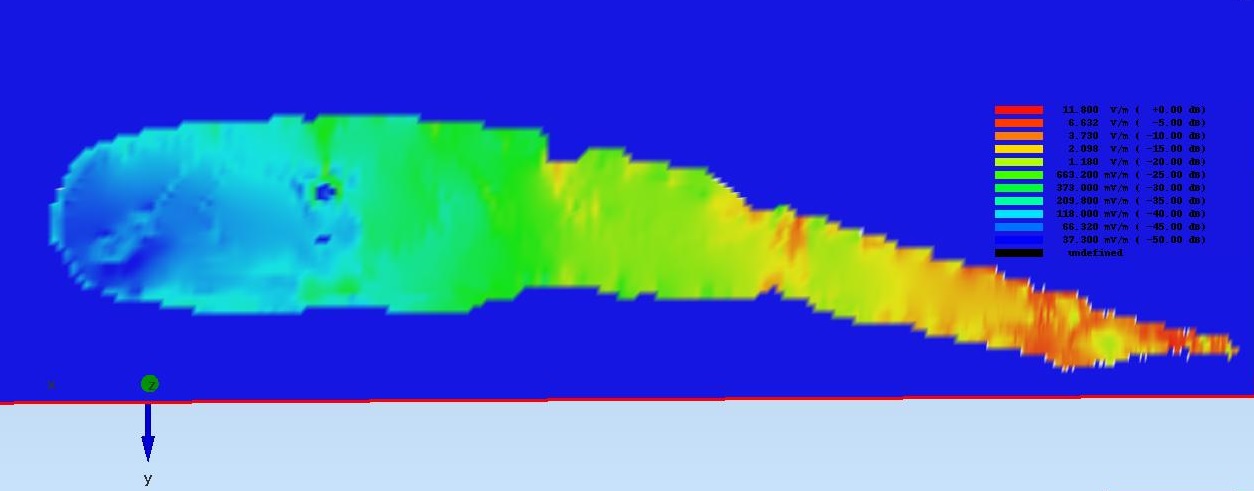
All simulation results in comparison to the basic limit values of the ICNIRP are summarized in the following table.
| Physical value | Result | Basic limit |
|---|---|---|
| Electrical current density (CNS) / J1cm2 | 0,15 A/m2 | 0,28 A/m2 |
| In situ elektrical field / E | 6,97 V/m | 18,9 V/m |
| SAR (head, torso) / SAR10g | 0,00032 W/kg | 2 W/kg |
| SAR (arms, legs) / SAR10g | 0,006,3 W/kg | 4 W/kg |
| SAR (whole body) / SARwb | 0,000030 W/kg | 0,08 W/kg |
Summarized, the results show that all physical values keep the basic limits. Grabbing in between the pads during operaton is possible without exeeding the limits valid for the general population in public area. (This result is valid for secondary pads of sufficient size and the operating frequency of 140 kHz only.)
Safety of active medical implants
Manufacturers of acitve medical implants e.g. pace makers certify their products for immunity to external magnetic fields. The corresponding product standard defines a test value at which the active implant must not show any functional impact. The product standart is oriented to the easy measureable reference limit value of the ICNIRP which is 6,25 µT at 140 kHz and has been defined slightly higher to 15 µT.Measurements of the flux density beside the vehicle and inside the vehicle show much lower flux densities.
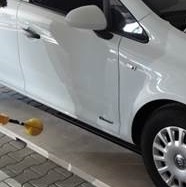
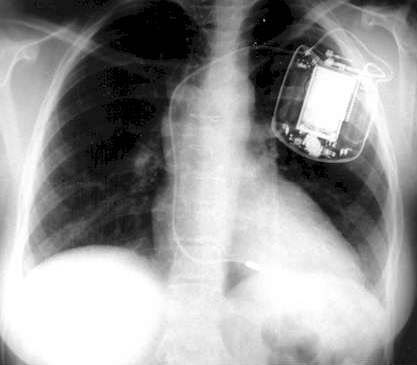
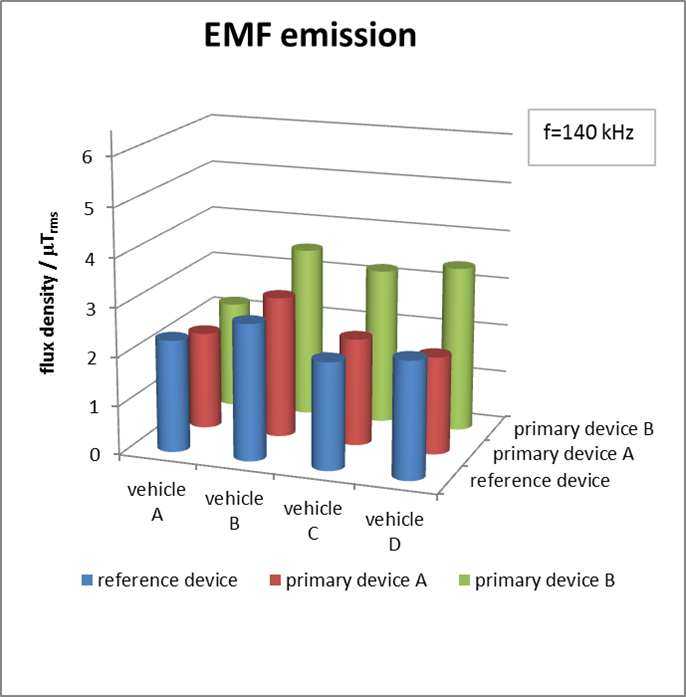
With a measured value of 3,75 µT at a potential position of a pace make within the above descrived scenario of lying beside the vehicle a wide margin to the immunity value of the pace maker product standard is given. For that reason the manufacturers of pace makers guarantee a safe operation even at this somehow extreme test scenario. Beside the direct measurement the body phantom simulaton also proved that result.